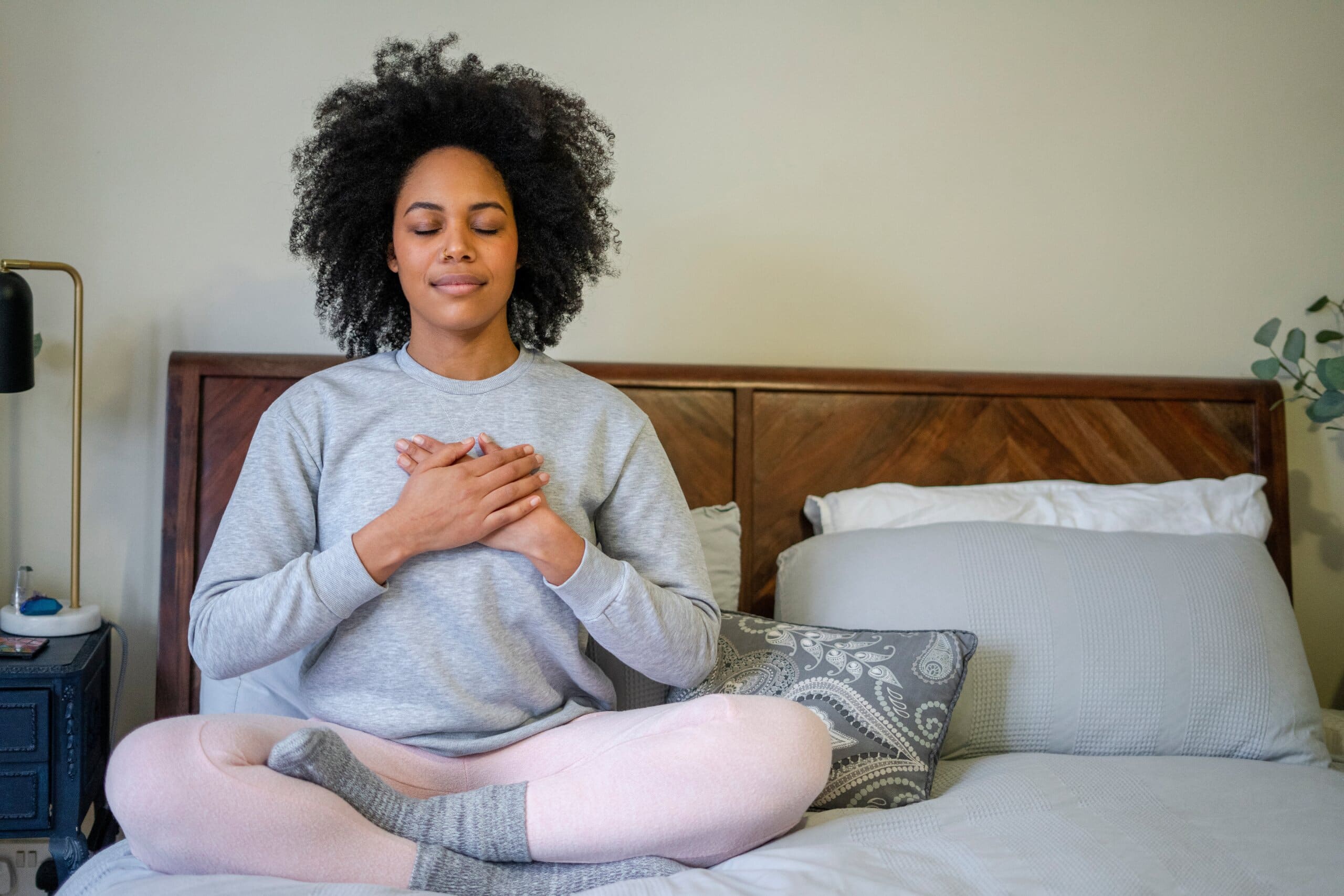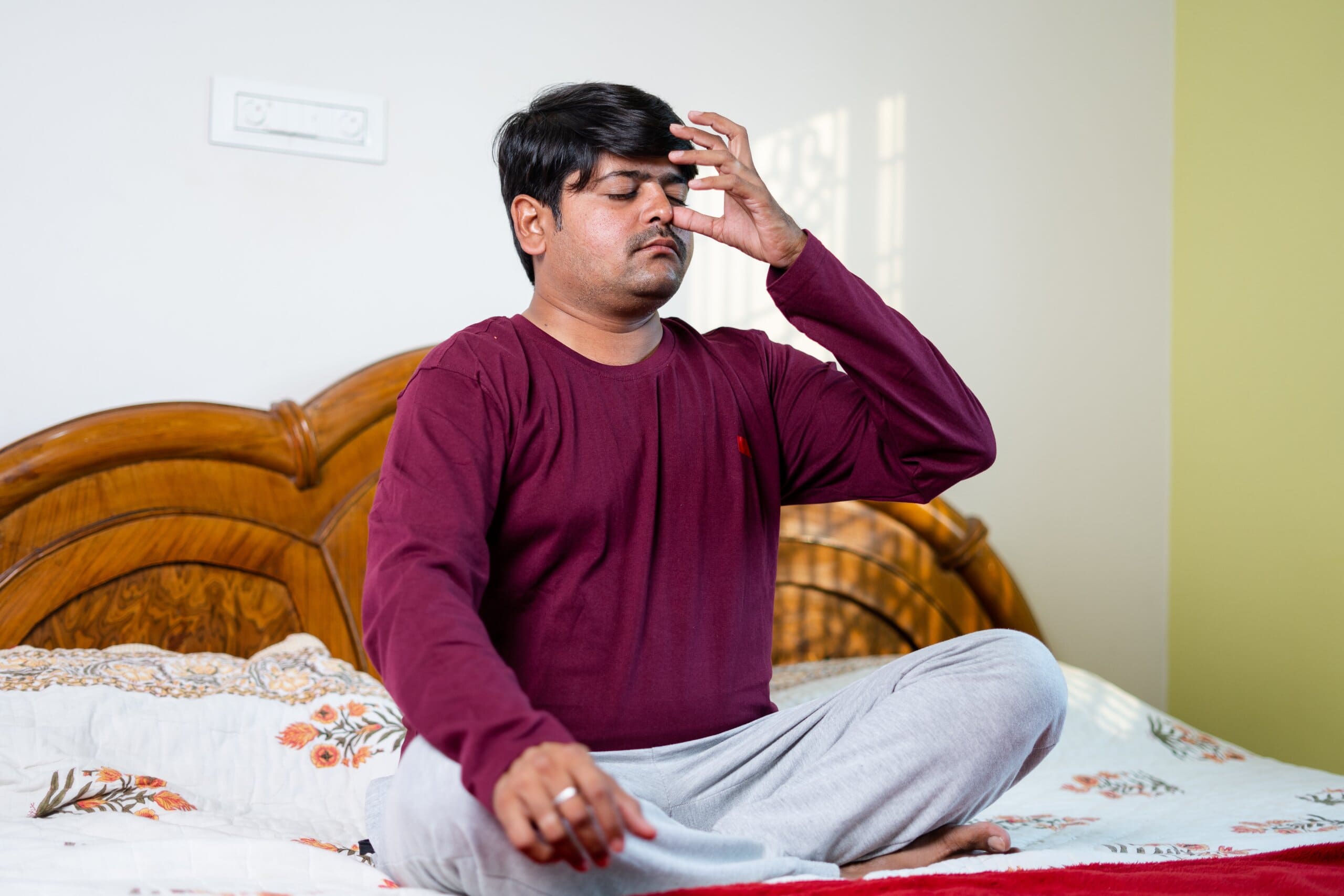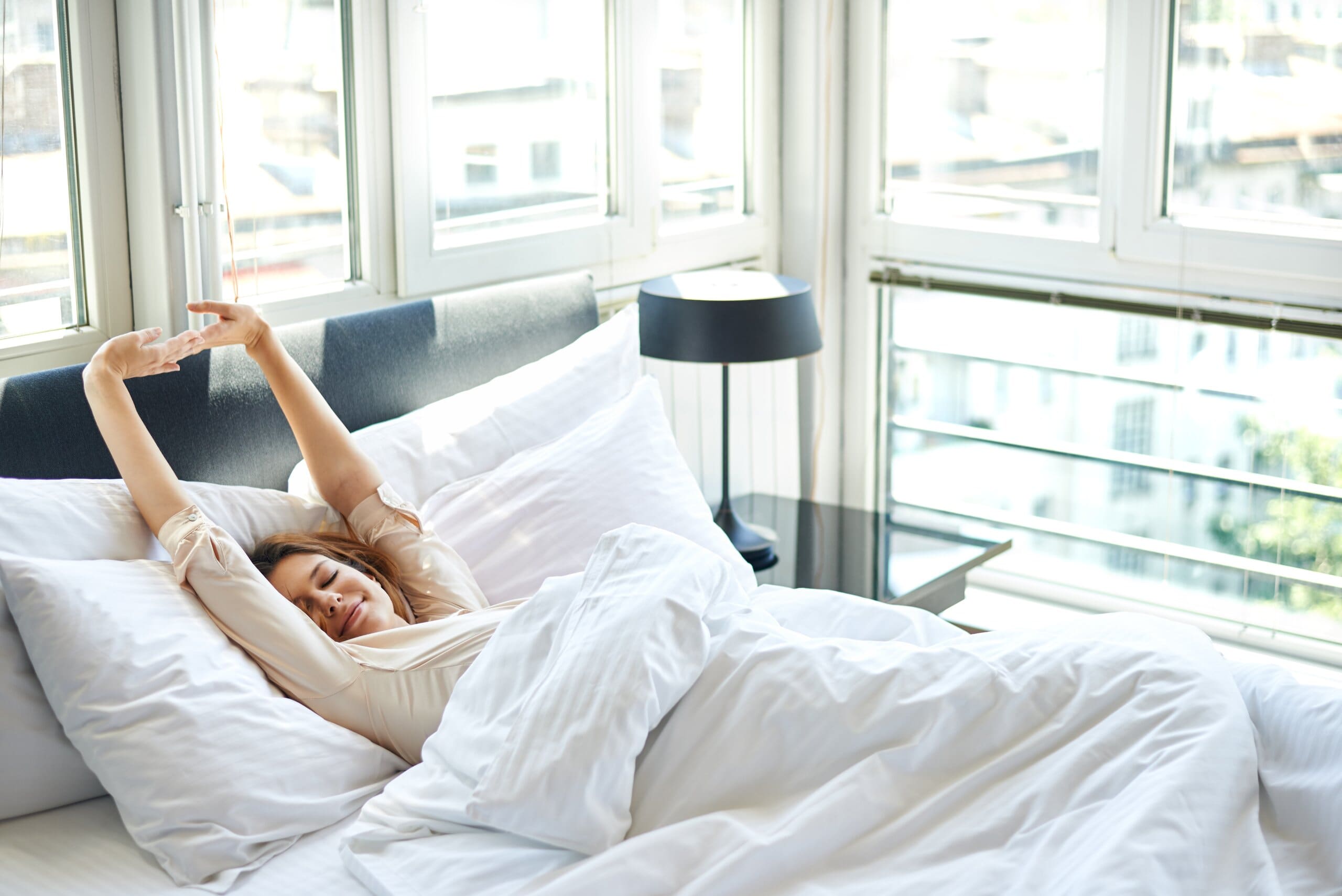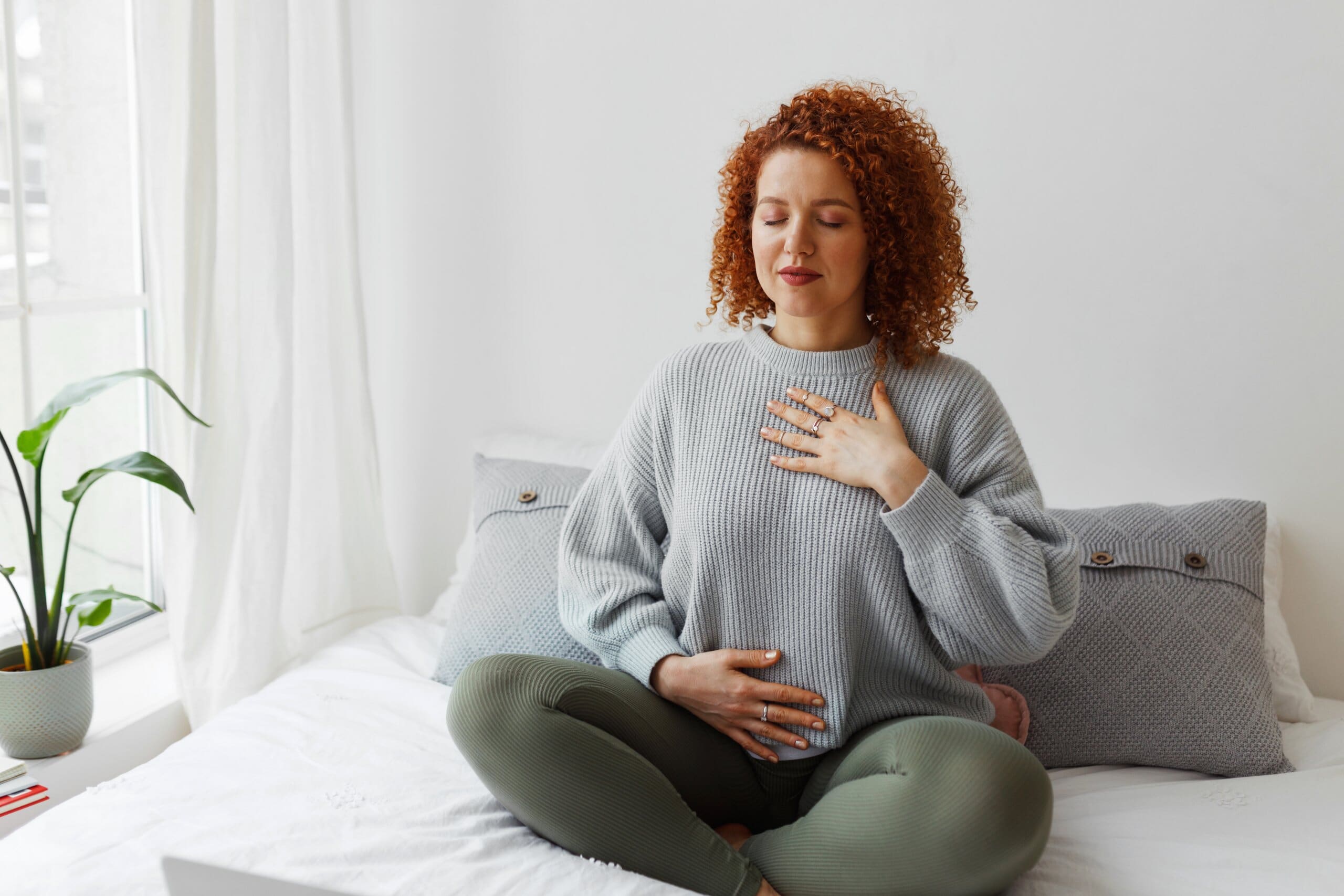While we all have those nights where we struggle to get to sleep on time; for some of us, such occasions happen a lot more often than we’d like. Whether it’s down to racing thoughts or stress tensing up your body, sometimes sleep just doesn’t come as fast as we’d like it.
If this sounds familiar to you, then don’t worry, because you’re not alone. In fact, recent research suggests that around 36% of people have trouble sleeping at least once a week. But while a couple of ‘bad nights’ here and there is nothing to worry about, consistent nights of poor sleep can stack up fast.
So, what can you do to help speed yourself off to the land of nod when you’re lying wide awake with your head on the pillow? Well, you might want to consider giving breathing techniques for sleep a go!
Tried and tested relaxation methods, breathing exercises for sleep have been proven to calm the body and mind, putting you in the right headspace to drift off swiftly and get better rest in general.
Take a look at our breakdown of the six most popular breathing techniques for sleep below so you can give one or two of them a try tonight!

What are breathing exercises for sleep?
For pretty much everyone, breathing is seen as one of those things we just ‘do’ without thinking about it. But mindful breathing or breathing techniques, the kind that require you to focus on your breaths individually, allow you to become consciously aware of the process.
Essentially, such breathing techniques allow you to exert greater control over the act of breathing and give you a deeper insight into how your body feels as your lungs rhythmically fill and empty. They shift the focus from the shallow, ‘top-of-the-lungs’ breathing that we normally do throughout the day to a slower, more regulated pattern.
In other words, such breathing techniques allow our lungs to work at maximum capacity and reap the oxygenating benefits that come with this.
Why you should try breathing exercises for sleep?
Although there are plenty of medication options out there to assist with sleep deprivation, chemical aids, such as sleeping tablets, should always be a last resort, as prolonged use can result in the ‘wrong’ kind of sleep.
Basically, these tablets create a drug-induced sleep rather than facilitating a regular sleeping pattern that allows your body to go through its natural cycles. Worse still, they can become addictive if taken too often.
Instead, we’d recommend going for the natural solution first before dabbling in any sleep drugs, hence why we’re talking about breathing techniques to fall asleep with, both as a means of reducing the impact of stress and cortisol on your sleep and properly resetting your circadian rhythm.
What are the best breathing techniques to fall asleep with?
Relaxation and breathing techniques come in a myriad of different forms, from counting breaths to visualisation, giving you plenty of choice in which technique you decide to start off with.
However, before we break down each of them for you, it’s important that you make your bedroom as comfortable as possible. You can start practising good sleep hygiene before turning in by optimising your bedtime routine and doing the following:
- Try to avoid drinking or eating just before you go to bed, or else your body will be too busy trying to digest food and drink for you to properly focus and relax, not to mention the fact that it could also result in a bathroom visit later in the night, interrupting your sleep.
- Avoid using devices such as mobile phones or tablets before bed.
- Invest in an old-fashioned alarm clock and leave your mobile phone downstairs so you’re not tempted to look at it every five minutes.
- Try to reduce your bedroom temperature to between 15.35-19.4°C if possible.
- Make sure your bed is made and that your mattress is comfortable!
Ready to go? Alright, let’s get started!

1. Diaphragmatic Breathing
Our first breathing technique to fall asleep to is known as diaphragmatic breathing, or ‘belly breathing’, and focuses on working the muscle at the bottom of the lungs to relax and de-stress you:
- Lie down and place one hand on your chest and the other on your belly.
- Breathe in through your nose until your belly pushes hard against your hand, keeping your other hand and your chest still.
- Then, engage your core muscles, purse your lips, and exhale as if you’re whistling.
- Repeat for a few minutes while slowly relaxing your body.
2. Meditative breathing
Next, we have meditative or ‘mindful’ breathing, which is a sleeping breathing technique that asks you to focus fully on every breath you take in order to pull your mind from everything else going on in your head:
- Make sure you’re comfortable, close your eyes, and give yourself a few moments to relax and become calm.
- Take a deep breath in, inhaling through your nostrils, and trying to fill your lungs as much as you can.
- Slowly exhale through your mouth, focusing on the sensation of the air leaving your body.
- Repeat this process twice more, each time slowly exhaling.
- Pause and then repeat from step two.
3. Alternating nostril breathing
Alternating nostril breathing is already a well-known yogic breathing method, and as it turns out, it’s one that also works very well when it comes to relaxing at the end of a busy day. This is also similar to moon breathing, which suggests that the left nostril is linked to the cooling moon energy!
- Make sure you’re comfortable.
- Exhale completely and then press your right thumb against your right nostril until it’s closed.
- Inhale through your left nostril and then close it with your right index finger, simultaneously opening your right nostril.
- Exhale through your now-open right nostril, then, keeping the right nostril open, inhale deeply before closing it with your thumb.
- Finally, open your left nostril by removing your finger and exhale fully to complete the set.
- Repeat for a few minutes until relaxed.
4. 4-7-8 breathing
By far the most commonly recommended method for anyone looking to use sleeping breathing techniques, the 4-7-8 method might be considered advanced, but once you get a handle on it, it’s very easy to master:
- Place the tip of your tongue behind your front teeth and press it up to the roof of your mouth, keeping it in this position for the entire process.
- Inhale through your nose for a slow count of four.
- Hold your breath for a slow count of seven.
- Exhale through your mouth over a slow count of eight and finish as if you’re blowing out a candle.
- Repeat for a few minutes or for as long as you feel comfortable doing so.
5. Humming bee breathing
Also known as Bhramari Pranayama, bee breathing, while odd, has been shown to lower anxiety and stress by taking advantage of the therapeutic act of humming, which releases endorphins into the body for a calming effect:
- Take a few natural breaths and close your eyes.
- Keep your lips tightly sealed and inhale through your nose.
- As you exhale, make the sound of the letter M, and keep humming until you feel the need to inhale again.
- Repeat by inhaling through your nose and humming as you exhale.
6. Lengthened breathing
Last, but not least, we have lengthened breathing. One of the easiest and quickest sleeping breathing techniques, lengthened breathing allows the parasympathetic nervous system to take over, relaxing you physically so that your mind can follow:
- Relax into a comfortable position.
- Breathe in for two seconds through your nose and breathe out for four seconds through your mouth.
- Repeat this for a couple of minutes.
- Then, breathe in for three seconds through your nose and out for six seconds through your mouth.
- Repeat for a couple of minutes.
From here, you can then continue to extend your breathing to a comfortable limit – just make sure that your exhales are twice as long as your inhales for each set.

Improving your sleep in the future
With these six breathing-for-sleep strategies at your side, you should hopefully find it much easier to get to bed on time moving forward. However, it’s important to remember that none of these exercises are instant quick fixes for sleep problems, and they won’t solve an underlying sleep problem.
For example, all the breathing exercises in the world won’t improve a poor night’s sleep on an ancient mattress. After all, your mattress has a huge bearing on the quality of your sleep. To fully reap the benefits of these breathing exercises, it's important to be as comfortable as possible. So, maybe it's time to replace your mattress with a new one, or invest in a mattress topper to upgrade a lumpy bed.
Plush, breathable bedding can also help you create the perfect sleep setup to practice breathing techniques in, so check out our range today and take advantage of our free next day delivery service. You can also take a look at our other helpful guides, such as the best sleeping positions for breathing problems.






